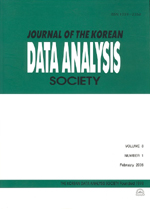국토정책변화에 따른 동남광역경제권의 인구이동 특성
The Characteristics of Migration through Regional Development Policy in Dongnam Economic Region
- 한국자료분석학회
- Journal of The Korean Data Analysis Society (JKDAS)
- Vol.14 No.5
-
2012.102829 - 2845 (17 pages)
- 33

본 연구는 국가의 지역개발정책에 따른 동남광역경제권(이하 동남권)의 인구이동변화(2005, 2010)를 전출입분석과 인구이동의 네트워크구조를 분석하고자 하는 것이다. 연구결과를 정리하면 1) 타 지역으로의 순유출은 계속하여 증가하고 있고, 2) 유출요인은 직업, 주택, 교육에 의한 것이 많아지고 있으며, 반대로 유입요인은 가족요인에 의한 것으로 나타났다. 3) 부산을 포함한 동남권의 주요도시는 주변지역이나 농촌지역에서는 지역간 이동량이 증가하는 것에 비해 반대로 줄어들고 있는 실정이며, 4) 동남권의 동부지역 즉 창원-김해-거제-부산-울산지역으로 인구가 집중되는 경향이 나타났다. 그리고 5) 사회네트워크 분석의 중심성 지수는 부산의 중심성지수가 증가하고 있는 것으로 나타났고, 계속하여 더욱 집중될 것으로 예상되고 있다.
The purpose of this study is to analyze the change of migration pursuant to regional development policy in Dongnam Economic Region (DNER). We analyzed the characteristics of each migration factor in DNER in 2005 and 2010. The results are (1) The number of out-migration to other regions has been increased. (2) The number of out-migration due to the factor of occupation, housing, education has been increased. On the other hand, the number of in-migration has been increased on account of family factor. (3) In major cities of DNER including Busan, the number of migration has been decreased in contrast to the increasing number of inter-regional migration on periphery area or rural region. (4) The drifted population of DNER has a tendency of being concentrated on East-DNER, Changwon-Gimhae-Geoje-Busan-Ulsan megalopolis. (5) Centrality index using social network analysis (SNA) revealed the fact that the centrality of Busan has been getting bigger. Migration network structure is forecasted to be more concentrated than the present.
1. 서론
2. 국토정책과 인구이동
3. 동남권의 지역 및 인구이동현황
4. 동남권의 인구이동특성
5. 결론
참고문헌
(0)
(0)